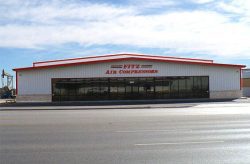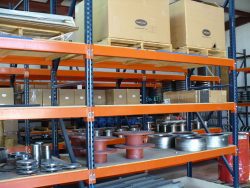How to Test a Torque Converter
The torque converter is a critical component in both vehicles and industrial machinery. Its principal function is to enable automatic shifting between gears by converting engine power to torque. This capability is essential in industrial settings where machinery must adapt to varying loads and operational demands seamlessly. Due to its complex role, it can often be challenging to determine whether issues are caused by a failing transmission or the torque converter itself.
Testing an industrial torque converter involves a similar process to that used in vehicles but adapted to the scale and context of heavy machinery. Typically, this testing can be done by measuring the revolutions per minute (RPM) under load conditions to assess performance at stall speed. This data, compared with the torque converter and engine specifications, will help diagnose whether the torque converter is performing as expected.
In the following sections, we delve deeper into how to effectively test a torque converter. We will also provide insights on what to monitor to ensure your machinery remains in top condition and answer common questions related to torque converter maintenance in industrial applications.
For specialized assistance with industrial torque converters, visit our Contact Us page or call us directly at 888-220-3489.
Symptoms of Issues With Your Torque Converter
The torque converter is an integral part of any engine with automatic transition. It is also a sensitive piece of equipment that may encounter problems when the conditions inside deviate from normal conditions.
For instance, it may encounter problems with the converter itself or the transmission fluid inside, creating issues with the vehicle’s transmission. Pay attention to the following symptoms of possible problems with your torque converter to determine the right time for testing.
Slipping Between Gears
Vehicles with manual transmission usually shudder at low RPM when higher gears are engaged, and this is often quickly remediated by simply downshifting to lower gears.
But in automatic vehicles, shuddering may indicate problems with the torque converter. This occurs when the torque converter malfunctions, causing the gears to slip when you’re changing gears.
Since the torque converter acts as a coupler between the engine and the transmission, problems will occur with the conversion and amplification of engine torque, which is used for engaging and shifting gears. The transmission malfunctions, gears will slip, and the vehicle shudders.
Overheating
An overheating transmission is also a telltale sign of issues with the torque converter. When this happens, your vehicle will signal you with the engine overheating warning. This is due to the sensitive temperature gauge connected to the transmission.
In most cases, an overheating transmission is caused by gear slipping. This causes a buildup of heat that causes the transmission fluid in the torque converter to boil, which in turn, causes the transmission to overheat.
An overheating transmission should always be a cause for concern. Leaving these problems unresolved can damage your transmission further, leading to a higher cost of repair and an even higher chance of peril on the road.
Loss of Acceleration
A vehicle that feels more sluggish than normal can manifest in many ways. You may get no response from your accelerator when you step on it, or it may give you a delayed reaction.
Regardless of how it manifests, a loss of acceleration strongly indicates a problem with either your transmission or torque converter. When you experience such an issue, it is recommended that you test your vehicle immediately to find the cause of the problem and fix it immediately.
Strange Grinding Noises
Hearing noises apart from the smooth humming of your engine is never a good sign. If the noises occur when accelerating your vehicle or when your engine is running while the car is stopped, then the noise might be caused by issues with your torque converter.
More specifically, noise coming from the torque converter might be caused by issues with the transmission fluid. These sounds can be anything from rattling to whining to knocking.
Surging
Another potential issue with the torque converter is the opposite of losing acceleration. This occurs when the vehicle randomly surges or lunges forward, which could indicate an issue with the transmission fluid being dirty or contaminated, further leading to issues with the torque converter.
How to Test a Torque Converter
Understanding the symptoms of problems with your torque converter is always helpful in determining the right time to take your engine to the shop for repairs.
However, when your engine exhibits symptoms, it means the issues have reached a stage where it is significant enough to manifest. At that point, you may be experiencing problems that may be otherwise inconvenient or perilous.
Early detection is always recommended to prevent significant damage to your torque converter and avoid problems,
That said, the following are steps you can take to test your torque converter using a method called the stall-speed test:
Step 1: Take the proper precautions.
The stall test involves running the engine at full throttle to determine its maximum speed in the D and R positions. It places immense stress on the engine. Even in the absence of damage, some older and most newer transmissions can actually be ruined by running this test, which is why it is crucial to take the proper precautions.
Make sure you’re taking the proper precauions before performing the test. Consider the following:
- Check with the transmission or vehicle manufacturer to ascertain the safety of the test with your specific vehicle or transmission model.
- Stay under five seconds when running the test.
- If your vehicle has an anti-lock brake system or traction control, then it is recommended that you do not perform the test at all.
- In some vehicles with transmissions controlled electronically, the test will trigger the check engine light, so inspect the engine after the test is performed.
- Ensure no one stands in front or behind the vehicle during the test.
Step 2: Prepare your vehicle.
Your vehicle must also be in the proper condition for the test. To do that, check the transaxle fluid levels in the car. It, together with the engine coolant, should be at its average operating temperature, which ranges from 80-90°C (176-194°F).
Additionally, apply the parking and service brakes fully to ensure the vehicle stays in place during the test. Attach chocks to both rear wheels as an additional safety layer and prevent accidental movement.
Lastly, install an engine tachometer on your vehicle if it doesn’t already have one. Make sure it’s visible from the driver’s seat. You can use this device to obtain the necessary values for the test.
Step 3: Start the engine to begin the test.
Make sure your vehicle is set to neutral, then start the engine. Alternatively, you can press your brake pedal until it reaches the floor before starting your engine. Then, shift the transmission to drive by selecting the “D” position without letting go of the brakes.
Step 4: Step on the accelerator until you touch the floor.
With your other foot still on the brakes, step on the accelerator pedal fully until your foot touches the floor without exceeding the five-second mark. This will be enough time to obtain the engine’s maximum RPM reading. Again, do not press the accelerator for more than five seconds to avoid blowing out the transmission.
To rerun the test, run the engine at about 1,000 rpm with the transmission engaged. Do so for two minutes to allow the transaxle fluid to cool down between tests. Once it has sufficiently cooled down, you may rerun the test.
Repeat the test by following the steps provided above. But the transmission must be in the “R” position this time.
Step 5: Interpret the results.
At this point, you will now have obtained the value of the maximum RPM reading at which the stall speed was obtained. Now, you will need to interpret the results by matching the values with your particular vehicle or transmission specifications. Use the guide below as the basis for your interpretation:
- Stall Speed in “D” and “R” Fall Below Specifications: engine output is insufficient due to a possible faulty torque converter. Perform a further assessment of the vehicle by checking if the engine is misfiring, ignition timing is off, there isn’t enough valve clearance, and many more. If any of these are good, then the torque converter is the likely source of the issue.
- Stall Speed in “D” is Above Specifications: the transaxle’s overrunning clutch or rear clutch is slipping. Locate the cause of the issue by performing a hydraulic test.
- Stall Speed in “R” is Above Specifications: the transaxle’s low-reverse brake or front clutch is slipping. Locate the cause of the issue by performing a hydraulic test.
Frequently Asked Questions
How can you tell if a torque converter is bad?
Issues with your torque converter can manifest in many different ways. You could be having trouble with a loss of acceleration, or it may suddenly surge forward. Your vehicle might be vibrating more regularly at low speeds, or you may hear strange noises. In some cases, the transmission might overheat and cause your car to stall.
What would cause a torque converter to lock up?
The normal operating temperature for the coolant is between 176-194°F. If the coolant becomes too cold, around 120°F, the torque converter might lock up. This can also happen in instances when the vehicle’s automatic overdrive is locked-out.
Can a bad torque converter damage transmission?
Issues with a failing torque converter can actually lead to significant damage on the transmission. When such issues as knocking, overheating, and knocking are noticed, it is vital that you take action immediately, as prolonging the damage could end up damaging the engine.
What does a failing torque converter sound like?
When there are issues with your torque converter, you may hear strange noises from the engine. When you accelerate, you may hear various noises, from rattling to whining to knocking.
What happens when a torque converter doesn’t lock up?
The torque converter lock-up clutch is responsible for taking stress off the fluid coupling of the torque converter. It also helps in reducing the amount of heat being generated at higher cruising speeds. The torque converter may periodically switch from lock up to “loose” mode. When it fails to lock up, your engine will continue operating under “stress” mode, increasing fuel consumption and radiator temperature considerably.
Protect Your Investment with Fitz Equipment
Having been in service for 50 years, Fitz Equipment knows the importance of maintaining the integrity of your engine parts to ensure vehicle performance. With our broad range of products and equipment solutions, we ship your orders as soon as possible to reduce operational downtime and maximize profitability.
If you are looking for Alison Torque Converters, we got you covered. You can request a quote here, or for immediate assistance, call us at 888 220 3489.




